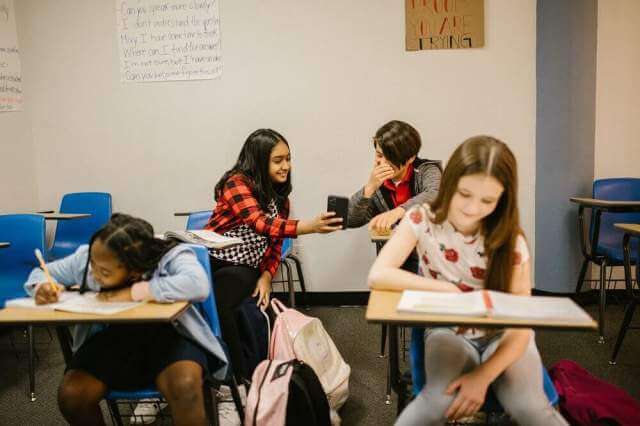Female students have faced the burden of interrupted schooling as families’ economic levels decreased due to the Covid-19 epidemic, with all earlier attempts to encourage education backfiring.
The closure of schools has been one of the most immediate effects of Covid-19 on the education of females. More males than girls have access to digital infrastructures like mobile phones, internet services, radio, and media due to closed schools and unequal resource distribution.
It’s worth noting that in India, there’s a 50 percent gender divide in terms of mobile internet users, with 21% of women and 42% of males using the service. This was made clearer by the abrupt move from classroom to virtual learning, which created a “gender-based digital barrier” that made things tough for female students.
According to a United Nations Children’s Fund (UNICEF) survey, females utilized 8% less of the most regularly used platforms for online studies, such as WhatsApp and Youtube, than boys.
Experts of assignment writing companies agree that digital schooling will further alienate girls from education and exacerbate educational inequities among learners due to this lack of access to technology.
Disruptions to a student’s academic career might have devastating implications. You see a three-month absence from school can result in a 1.5-year learning loss years later. COVID-19 is having an influence on school-aged boys and girls all across the world.
Unfortunately, the impact of education loss on girls is considerably worse during and after COVID-19 closures. According to a Malala Fund study, 20 million girls in impoverished nations may never return to school due to the epidemic.
Female Education’s Unparalleled Importance
- Increased Literacy: Nearly 63 percent of the 163 million illiterate youngsters on the planet are female. Literacy rates will rise by providing education to all children, accelerating development in underdeveloped areas.
- Human Trafficking: According to the United Nations Inter-Agency Project on Human Trafficking, women are most vulnerable to trafficking when uneducated and impoverished. This multibillion-dollar business may be severely harmed by giving young females opportunities and essential skills.
- Political Representation: Women are underrepresented as voters and are barred from participating in politics worldwide. According to the United Nations Women’s leadership and participation programs, civic education, training, and overall empowerment will help close this gap.
- Children educated: Moms are twice as likely to live through the age of five, according to the United Nations Girls’ Education Initiative. Burundi, an East African country where over 16,000 children die each year, may substantially benefit from outside help for schoolhouses and curriculum improvement.
Girl’s education among the post-pandemic scenario
As a result of lockdowns, females were given more responsibility for household tasks, leaving less time to focus on their studies. That is why only guys were allowed access to online schooling and their families’ savings.
Furthermore, parents of girls’ children do not want to invest their funds in their children’s education because they believe that girls must leave one day after marriage and do home duties. Because secondary school is not free, unlike basic education, this is a significant concern for teenage girls. Economically stressed families seek to be free of raising a girl kid due to current cultural expectations.
India already has the highest number of child brides globally, with 23 million, and the epidemic is expected to increase this number. It has been shown that distress calls relating to early marriage have increased by 17%. Parents of girl children were also unconcerned, believing that the system was preoccupied with the Covid-19 crisis.
In a statement, UNESCO stated that the virus’s health hazards for females are not restricted to the virus itself. On the other hand, home confinement increases the likelihood of domestic violence and sexual abuse.
Due to the pandemic’s combined consequences of school closures, economic hardship, service interruptions, early marriages, domestic violence, pregnancies, and parental deaths, the most vulnerable girls are at an increased risk.
India already has the highest number of child brides globally, with 23 million, and the epidemic is expected to increase this number.
It has been shown that distress calls relating to early marriage have increased by 17%. Parents of girl children were also unconcerned, believing that the system was preoccupied with the Covid-19 crisis.
In a statement, UNESCO stated that the virus’s health hazards for females are not restricted to the virus itself. On the other hand, home confinement increases the likelihood of domestic violence and sexual abuse.
Due to the pandemic’s combined consequences of school closures, economic hardship, service interruptions, early marriages, domestic violence, pregnancies, and parental deaths, the most vulnerable girls are at an increased risk.
TechBehindIt has identified Some ways to counter these post-pandemic consequences are – providing free access to technology such as mobile phones, laptops, and free data packs.
This will ensure that free learning materials are readily provided so that girls can study at their convenience and manage the household and educational requirements with an established support system.
Education for adolescent girls should be made free of cost by extending the Right to Education Act 2009 to include secondary education, an additional cost to bear.
Girls even like to play some ps4 games for girls. To reduce the economic burden on parents, the cost of schooling for girls should be decreased through scholarships and incentives.
Finally, proper training techniques and approaches for schools, the community, and parents should prepare them to respond to the growing gender-based violence and incidents of child marriage.


